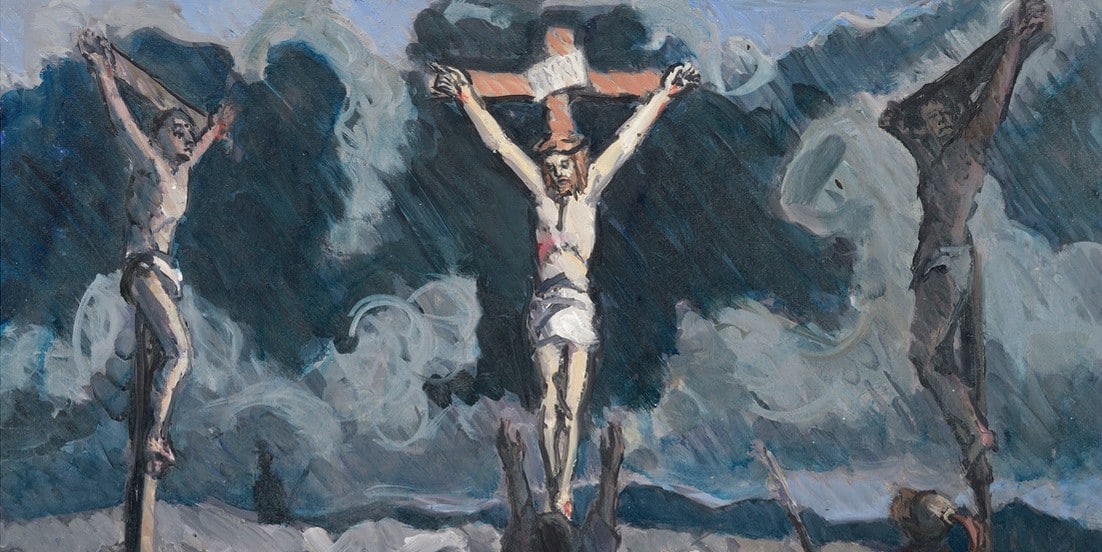My mother was a painter, and I grew up with her pictures all round me. As soon as I could use them, I was given a lot of paints – and from then on painting became part of my life. When I was a student, I was taught an excellent but very restrictive way of drawing. It was not until I was awarded a travelling scholarship to Italy that I became aware that there was more than one way of doing it. I was overwhelmed by Italy – both by the place itself, and by the marvellously-painted walls of the churches. I loved both the way they were done, and what they were about.
My wife was another big influence on me. We were married for 66 happy years, and since her death I have come to think of her as a Muse – the way Beatrice was for Dante. She was always a better painter than me, and she is still a great help. After a few years of marriage, we were received into the Church. At last I felt at one with the Italian masters I had admired.
The technical language of drawing and painting has always fascinated me; I also paint a lot from nature. Painting must become a metaphor: the paint and the subject must click and become something of its own. It is not a copy of something, or only an illustration; ideally it must be beautiful. Beauty is something that must be recognised; I see it both in nature and in the life of Our Lord. I also sense its presence in Our Lady, for whom I have a special devotion.
Why do I paint? It seems to come from deep down. I hope I can say I love Our Lord and all that He has made – and since we are made in His image, we must surely try to be creative. The Life of Christ is the life of a man who is also the Second Person of the Holy Trinity. As I grow older – I’m now 94 – I begin to realise this more fully. What Jesus did and who He is has become focused in the Blessed Sacrament. What humility! What generosity! How could He? Why should He?
Painting, drawing and etching the Life of Christ has been an obsession for many years. I am in the middle of my fifth attempt now. Painting Christ is a way of praying to Him, and above all of loving Him. That word: “Love”. The love that exists between the Persons of the Trinity is the Love that has made the universe. And this Love demands a simple response: “Give yourself to me in the same way I give myself to you.” And so I take up my brush, and start to paint part of the story.
I have heard people say that religious painting is now redundant. But in his book <em>I Paint What I Want To See</em>, Philip Guston points out how Giotto was the perfect storyteller. And I think that storytelling is still important. How many people actually know the stories of Our Lord told in the Bible? Here it is again, I say – you can’t get too much of it
Our society has lost its foundations and is in danger of falling apart. I believe that the Life of Christ is the right foundation to build it up again – no ifs and buts, no ambiguity, just simple faith. Perhaps I can go deeper and say something about my personal experience in the form of a story. When we begin to feel the pull of faith, we can find it exciting, but fairly soon we become aware of our own shortcomings and the shortcomings of society of which we are a part. This can become frightening, so we turn to the Cross, and find Jesus suffering in the same way. But in His case, He is not suffering from His own shortcomings, but for ours.
<em>Francis Hoyland’s </em>Life of Christ<em> paintings are on display at the <a href="http://www.chappelgalleries.co.uk">Chappel Galleries</a> in Colchester until 24 April. </em>



